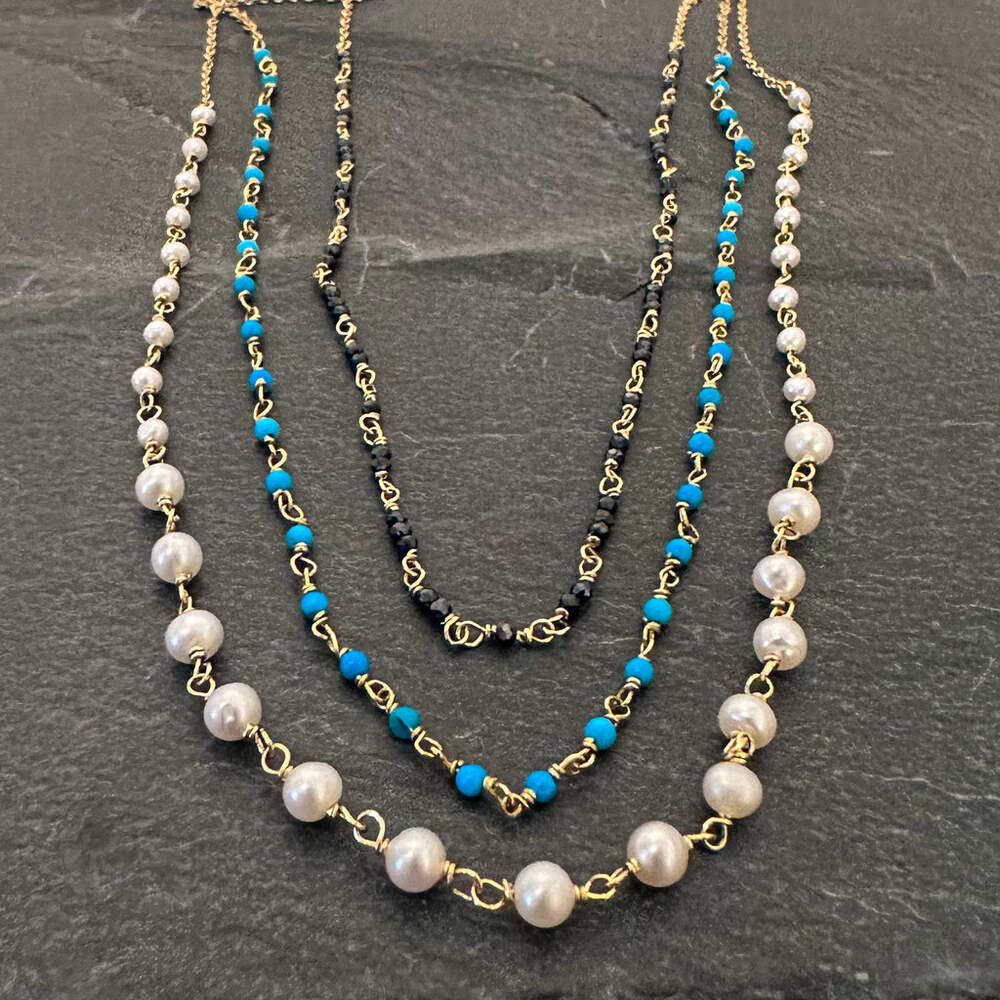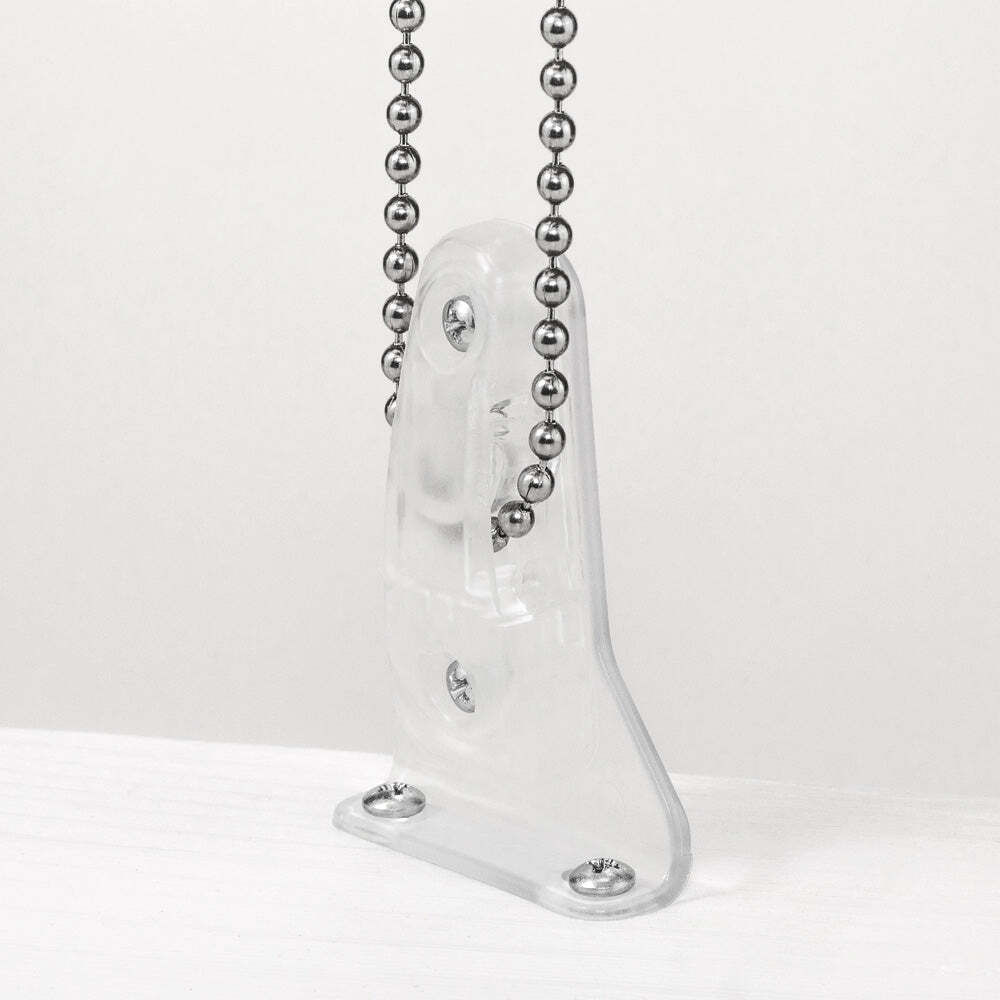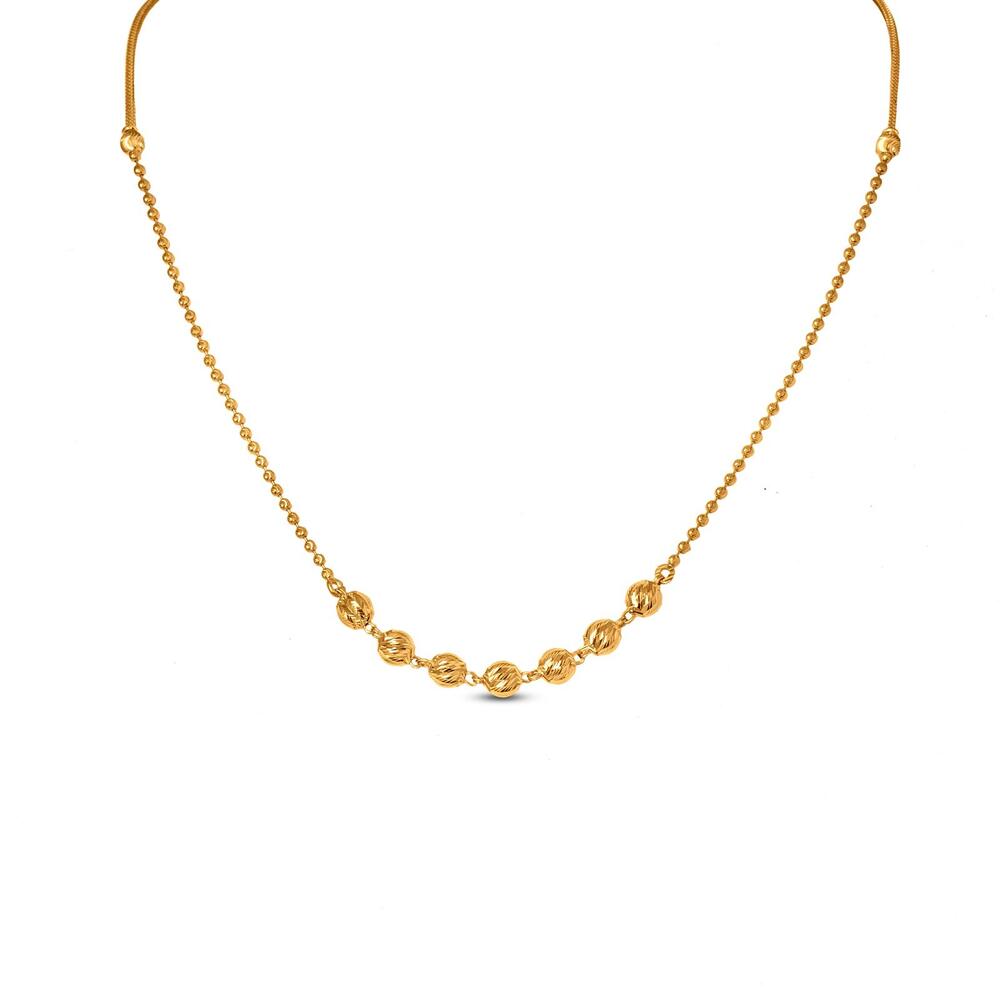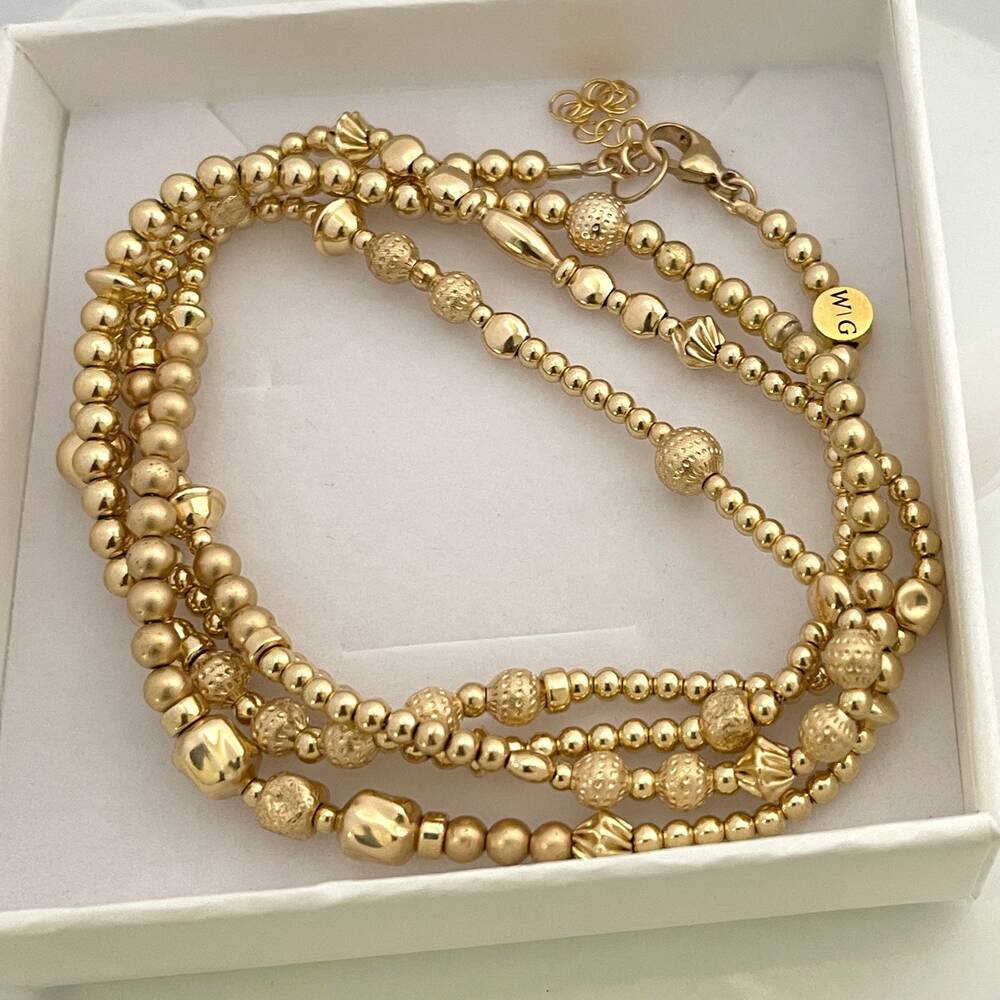Beading chains have become a staple in jewelry-making, offering versatility, durability, and aesthetic appeal. These chains serve as the backbone of various pieces, from necklaces to bracelets, allowing beaders to showcase their creativity. Consequently, understanding the types of beading chains, their applications, and design tips can help you create stunning jewelry. Therefore, this comprehensive guide explores different beading chains, their uses, and expert tips for crafting. By delving into these aspects, you can elevate your jewelry-making skills and produce high-quality pieces.
Types of Beading Chains
Beading chains come in various materials, styles, and sizes, each suited for different projects. Understanding these types helps you choose the right chain for your designs. Therefore, exploring the types of beading chains is essential.
Metal Chains
Metal chains are popular in jewelry-making due to their strength and versatility. These chains are available in materials like stainless steel, sterling silver, gold-filled, and brass. Stainless steel chains are known for their durability and resistance to tarnish, making them ideal for everyday wear. Sterling silver chains offer a classic look and can be easily paired with various beads and pendants. Gold-filled chains provide the luxurious appearance of gold at a more affordable price, while brass chains add a vintage touch to your designs. By understanding the properties of different metal chains, you can select the right one for your projects. Therefore, recognizing the strengths of metal chains is crucial.
Bead Chains
Bead chains, also known as ball chains, feature small, round beads connected by links. These chains are available in various materials, including metal, plastic, and glass. Metal bead chains, such as those made from stainless steel or brass, offer durability and a sleek appearance. Plastic and glass bead chains provide a lightweight and colorful alternative, perfect for playful or casual designs. Bead chains are often used in keychains, dog tags, and simple necklace designs. By understanding the versatility of bead chains, you can incorporate them into various projects. Therefore, recognizing the unique qualities of bead chains is essential.

Applications of Beading Chains
Beading chains can be used in a wide range of jewelry projects, from simple necklaces to intricate bracelets, enhancing your designs. Understanding these applications helps you make the most of your beading chains. Therefore, exploring the applications of beading chains is essential.
Necklaces and Pendants
Beading chains are commonly used in creating necklaces and pendants. The chain provides a foundation for adding beads, pendants, and charms, allowing you to design a piece that suits your style. Metal chains are ideal for elegant and timeless designs, while bead chains offer a more casual and playful look. Adjustable chain lengths and various clasp options ensure a comfortable fit for any necklace. By understanding how to use beading chains in necklaces and pendants, you can create stunning and versatile jewelry. Therefore, recognizing the potential of beading chains for necklaces is crucial.
Bracelets and Anklets
Beading chains are also perfect for crafting bracelets and anklets. These chains can be adorned with beads, charms, and other embellishments to create unique and personalized pieces. Metal chains provide a sturdy base, ensuring your bracelet or anklet withstands daily wear. Bead chains offer a lightweight and comfortable option, perfect for layering with other bracelets. By understanding the applications of beading chains in bracelets and anklets, you can expand your jewelry-making repertoire. Therefore, recognizing the versatility of beading chains in wrist and ankle jewelry is essential.
Design Tips for Using Beading Chains
Incorporating beading chains into your designs requires creativity and attention to detail. Understanding expert tips and techniques can help you achieve professional results. Therefore, exploring design tips for using beading chains is essential.
Selecting the Right Chain
Selecting the right beading chain for your project is crucial to achieving the desired look and functionality. Consider the chain’s material, size, and style to ensure it complements your design. For example, choose a delicate and thin chain for a minimalist necklace, or opt for a thicker and more substantial chain for a statement piece. Matching the chain’s color with your beads and embellishments ensures a cohesive and polished appearance. By understanding how to select the right beading chain, you can create harmonious and visually appealing designs. Therefore, recognizing the importance of thoughtful selection is crucial.
Mixing and Matching Chains
Mixing and matching different beading chains in a single design can add depth and interest to your jewelry. Combining chains of varying textures, materials, and thicknesses creates a unique and dynamic look. For instance, pair a delicate metal chain with a bold bead chain to achieve a balanced and eye-catching piece. Experimenting with different chain combinations allows you to explore new design possibilities and express your creativity. By understanding the art of mixing and matching chains, you can elevate your jewelry designs. Therefore, recognizing the value of creative experimentation is essential.
Adding Focal Points and Embellishments
Incorporating focal points and embellishments into your beading chain designs enhances their visual appeal. Focal points, such as pendants, charms, or large beads, draw attention and create a central theme for your piece. Embellishments, including spacer beads, dangles, and connectors, add texture and interest to the overall design. Positioning focal points and embellishments strategically ensures a well-balanced and harmonious composition. By understanding how to add focal points and embellishments, you can create captivating and unique jewelry. Therefore, recognizing the importance of thoughtful embellishment is crucial.

Practical Tips for Working with Beading Chains
Working with beading chains requires specific tools and techniques to achieve professional results. Understanding these practical tips helps you navigate the jewelry-making process with ease. Therefore, exploring practical tips for working with beading chains is essential.
Essential Tools and Materials
Having the right tools and materials is essential for successful beading chain projects. Common tools include chain nose pliers, round nose pliers, wire cutters, and jump ring openers. These tools allow you to manipulate and assemble your chains with precision. Additional materials, such as jump rings, clasps, and bead tips, are necessary for connecting and securing your designs. Investing in high-quality tools and materials ensures durability and ease of use. By understanding the importance of essential tools and materials, you can enhance your jewelry-making experience. Therefore, recognizing the value of proper equipment is crucial.
Techniques for Cutting and Connecting Chains
Mastering the techniques for cutting and connecting beading chains is key to achieving polished and professional results. Use wire cutters to trim chains to the desired length, ensuring clean and precise cuts. To connect chain segments or add clasps, open and close jump rings using chain nose pliers. Proper opening and closing techniques prevent gaps and ensure secure connections. Practicing these techniques improves your confidence and skill in working with beading chains. By understanding the techniques for cutting and connecting chains, you can create flawless jewelry designs. Therefore, recognizing the importance of technique mastery is essential.
Ensuring Durability and Longevity
Ensuring the durability and longevity of your beading chain jewelry is crucial for maintaining its quality and appeal. Use high-quality chains and findings to prevent breakage and tarnishing. Regularly inspect your pieces for signs of wear and repair any damaged components promptly. Storing your jewelry properly, such as in a jewelry box or anti-tarnish bags, protects it from exposure to air and moisture. By understanding the importance of durability and longevity, you can create long-lasting and beautiful jewelry. Therefore, recognizing the value of quality and maintenance is essential.

Addressing Common Questions About Beading Chains
Understanding common questions about beading chains provides additional clarity and guidance. Knowledge of these answers ensures better preparation and confidence. Therefore, exploring common questions is essential.
How Do I Choose the Right Beading Chain for My Project?
A common question is how to choose the right beading chain for a project. Consider factors such as material, size, style, and the overall design aesthetic. Ensure the chain complements your beads, pendants, and embellishments for a cohesive look. Matching the chain’s strength with the weight of your components guarantees durability and functionality. By understanding these considerations, you can select the perfect beading chain for your project. Therefore, recognizing the importance of careful selection is crucial.
Can I Combine Different Types of Beading Chains in One Design?
Another common question concerns the feasibility of combining different types of beading chains in one design. Yes, mixing various chains—such as metal, bead, and rope chains—adds depth and interest to your pieces. Ensure the chains complement each other in terms of color, texture, and style for a harmonious appearance. Experimenting with different combinations allows you to create unique and dynamic jewelry. By understanding the possibilities of combining chains, you can expand your creative horizons. Therefore, recognizing the potential of mixed designs is essential.
Addressing Common Misconceptions About Beading Chains
Addressing common misconceptions about beading chains provides accurate information and dispels concerns. Clarifying misunderstandings ensures an informed perspective. Therefore, this section explores common misconceptions about beading chains.
Misconception: Beading Chains Are Only Suitable for Simple Designs
A common misconception is that beading chains are only suitable for simple designs. In reality, beading chains can be used in intricate and complex jewelry pieces. Combining different chains, adding embellishments, and experimenting with various techniques create elaborate and sophisticated designs. By understanding the versatility of beading chains, you can unlock endless creative possibilities. Therefore, dispelling this misconception highlights the potential for complexity.
Misconception: Metal Chains Are Prone to Tarnishing and Breakage
Another misconception is that metal chains are prone to tarnishing and breakage. While low-quality chains may be susceptible to these issues, high-quality metal chains offer durability and resistance to tarnish. Investing in reputable brands and proper care ensures the longevity of metal chains. By understanding the importance of quality, you can confidently use metal chains in your designs. Therefore, dispelling this misconception emphasizes the value of quality materials.
Conclusion: Mastering the Art of Beading Chains
Mastering the art of beading chains involves understanding their types, applications, design tips, practical techniques, and addressing common questions. Proper knowledge of these aspects ensures a successful and creative jewelry-making experience.
Exploring key elements such as metal and bead chains, applications in necklaces and bracelets, expert design tips, essential tools, and addressing common questions provides valuable insights. Recognizing the importance of thoughtful selection, creative experimentation, and durability enhances overall understanding and execution.
By engaging with these elements, jewelry makers can confidently incorporate beading chains into their projects, creating beautiful and unique pieces. Therefore, whether you are a beginner or an experienced jewelry maker, understanding beading chains offers practical and valuable insights. Embrace the opportunity to enhance your craft, knowing you have the knowledge and resources to create stunning jewelry designs effectively!
